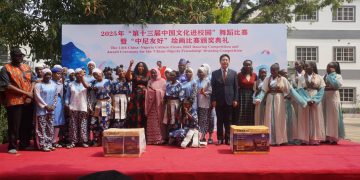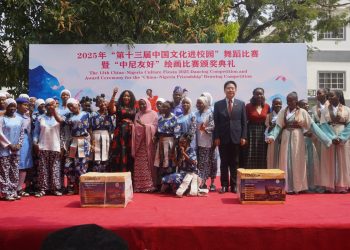The new naira notes are already being counterfeited, four days after they were rolled out to the public by the Central Bank of Nigeria (CBN) through the commercial banks, The Nation findings have shown.
In a video which has now gone viral, a man was heard saying his wife, who operates a Point of Sale (PoS) machine was given a counterfeited N1,000 new naira note.
He displayed the genuine and counterfeited new naira notes for viewers to spot the difference.
He said: “Ladies and gentlemen. Fake money is in town now. People should be very careful. This is the original one, while this is the fake one.
“My wife is doing PoS business, someone gave her this money, but we do not know who it was. We later discovered that the money is fake.”
President Muhammadu Buhari had last month unveiled the new notes of the three highest denominations of the Nigerian currency: N200, N500 and N1,000.
The unveiling was done at the Council Chambers of the Presidential Villa, Abuja, shortly before the commencement of the Federal Executive Council meeting.
Central Bank Governor Godwin Emefiele, said the introduction of new notes was a deliberate step by government to check corruption and counterfeiting of the notes.
The CBN is by law responsible for the issuance of the Naira and kobo (Sections 17, 18 and 19) of the CBN
It is also against the law for any individual or establishment outside the CBN, to print money or be in possession of counterfeit notes.
“If you are caught and convicted of a counterfeiting crime, you may face up to five (5) years imprisonment with no option of fine (Section 20),” the CBN said in a circular on its website.
The CBN said the Naira banknotes are protected by a number of security features to enable the easy recognition of genuine notes.
The distinguishing features which can be recognised by touch and visibility are the raised print, the security thread and the watermark.
Other areas such as the portrait, lettering and the denominational numerals on the obverse and reverse of the notes are embossed.
“The raised prints provide the tactility, while the security thread, which ordinarily, looks broken but is not when held up against light, has “CBN” in small lettering printed on both sides of the notes.
“The Naira notes are also protected against photocopying. There are also features, which are visible under ultraviolet light; for example, the serial number on each banknote is black, but turns green under ultraviolet light,” the apex bank said in a note on its website.
The CBN’s Banknote Fitness Standards also provides the general public with clear, acceptable criteria for determining the quality of banknotes in circulation.
It shows the stages of degradation by soiling, limpness and thus defines the acceptable threshold for fit notes in circulation.
The fitness criteria include the durability and functionality of security features on the notes, banknotes structure and durability, and banknote quality i.e. print and appearance of notes.
The Clean Note Policy was instituted by the CBN in a bid to improve the physical appearance and lifespan of the banknotes in circulation.
The concept of Clean Note Policy requires that the production, issuance of new banknotes and recirculation by the DMBs/CPCs must conform to the predetermined standards.
It also aims at ensuring that the quality of Naira banknotes in circulation must be in good condition to allow for processing and free acceptability by the general public.
“The document displays features on the obverse and reverse of the banknotes. It also states the responsibilities for issuance, recirculation and processing, counterfeits and mutilated notes management as well as standards for banknotes processing machines.
“The public awareness campaign on Naira abuse and handling are also highlighted to aid the longevity of the banknotes and reduce the huge cost of processing and banknote replacement,” the CBN said.













































